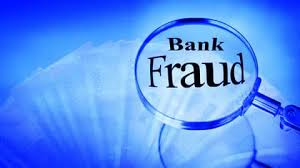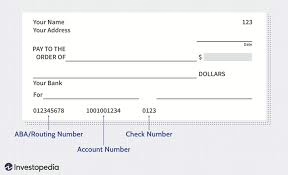In the realm of finance, the banking sector is predominantly preoccupied with certain prevalent forms of fraud. These include check fraud, debit and credit card fraud, fraudulent activities involving safe deposit boxes, and ACH (Automated Clearing House) fraud. However, the landscape of bank fraud is vast and encompasses a multitude of other schemes that extend beyond these familiar categories. To effectively shield your financial institution from such deceptive practices, it is vital first to grasp the various risks involved. Below are 25 distinct types of bank fraud, along with links to further resources for deeper insights.

Account Takeover
This form of fraud occurs when criminals gain control over legitimate accounts belonging to unsuspecting individuals. They might acquire an account holder’s login credentials through phishing attacks or by purchasing them on the dark web after they have been compromised in a data breach. Once they infiltrate the account, these thieves can change personal information like addresses and request new checks or replacement cards. Alternatively, they may transfer funds out to another account.

Accounting Fraud
Accounting fraud primarily impacts business lending. It involves companies manipulating their financial records to present a misleadingly favourable picture of profitability. By submitting these altered statements to banks, they secure loans that they ultimately cannot repay due to their actual insolvency, resulting in significant losses for the banks involved. A notorious instance of this is the Enron scandal.
 ACH Fraud
ACH Fraud
ACH fraud encompasses any fraudulent activity involving the Automated Clearing House system used for electronic payments and transfers. Criminals often employ social engineering tactics to deceive individuals into unwittingly sending money through ACH transfers directly into their hands or may steal sensitive account information, enabling them to siphon funds into external accounts.

Advance or Upfront Fee Fraud
This type of scam requires victims to pay an upfront fee in exchange for promised returns—whether that be money, services, or exclusive opportunities. It often takes forms that intersect with other fraudulent schemes, such as cashier’s checks or money order scams. A common variant involves scammers masquerading as officials from Nigeria who solicit assistance in transferring large sums out of their country, assuring targets that they will be generously rewarded for their help.

As we delve deeper into this intricate world of bank fraud—its varied manifestations and evolving tactics—it becomes increasingly clear how crucial it is for institutions and individuals alike to remain vigilant and informed about potential threats lurking within our financial systems.
Once upon a time, in the bustling realm of finance, a shadowy underworld thrived, where nefarious characters devised cunning schemes to exploit the unsuspecting. Among these schemes was a particularly devious form of deception known as Application Fraud. Here, unscrupulous individuals would craft deceitful applications for bank loans or credit cards, employing identities that were either stolen, forged, or bizarrely concocted—a veritable patchwork of falsehoods. After securing their ill-gotten gains, they would swiftly drain the funds or frivolously spend the borrowed money before vanishing into thin air, leaving no trace and certainly no repayments behind. This alarming trend underscored a vital lesson: vigilance in monitoring all banking activities is crucial—not merely focusing on outgoing payments.
Meanwhile, lurking in the shadows was another form of treachery: ATM Fraud. In this scenario, criminals would execute elaborate plans involving fraudulent deposits at ATMs. They would slip counterfeit checks into machines that still accepted envelope deposits and then withdraw cash before anyone at the bank could raise an alarm. These particular ATMs posed significant risks due to their outdated technology. Additionally, some scoundrels resorted to placing skimming devices on machines or setting up hidden cameras nearby to capture unsuspecting users’ account information as they conducted transactions. In more audacious cases, these tricksters even scoured the Internet for ATM user manuals to exploit machines with default security codes—breaking into them with ease.

Not too far from this chaos lay another scheme known as Bill Discounting Fraud—though it was less common than its counterparts, it remained a threat worth recognizing. In this intricate ruse, a fraudster would establish a business account at a bank and then persuade the institution to manage bill collections for supposed clients of their fictitious enterprise. These so-called clients were nothing but accomplices in crime who always paid their bills on time—creating an illusion of reliability that lulled the bank into complacency over time. Eventually, when trust had been firmly established, and confidence reached its peak, the fraudster would request that payments be credited in advance for future bills. Once granted access to those funds by an unsuspecting bank employee—the con artist would vanish with all that money intact.

As if these plots weren’t enough to keep one’s heart racing in fear of financial ruin, there existed yet another peril: Card Fraud—a term encompassing any deceit involving debit cards, ATM cards, or credit cards alike. In this scenario, criminals might physically steal cards from their victims and attempt transactions right under their noses—or, more commonly nowadays—they’d swipe card numbers digitally to conduct card-not-present transactions online.
And lastly came Cashier’s Check Fraud—a particularly insidious trick involving counterfeit cashier’s checks or money orders designed specifically for duping targets into depositing them unwittingly. The fraudster often spun elaborate tales intended to convince potential victims that depositing such checks was not only safe but also beneficial—for instance, they might reach out to someone selling an item online only to lure them into trusting fake payment methods.
In this vast landscape filled with deception and trickery surrounding financial institutions—one thing became abundantly clear: staying informed about potential threats was imperative for anyone wishing to safeguard their hard-earned assets against those lurking within shadows waiting patiently for opportunities to strike.

The Underbelly of Financial Crime: A Cautionary Tale
The Shadowy World of Identity Theft
In a digital age where personal information is a prized possession, a sinister breed of criminals has emerged, adept at pilfering the identities of unsuspecting victims. These nefarious individuals employ various tactics—hacking into secure databases, purchasing stolen credentials from the dark web, or luring individuals into traps through deceptive phishing schemes. Once they seize control of someone’s data, the consequences can be dire; they might infiltrate bank accounts, establish new financial accounts under pretences, or even attempt to secure loans in another person’s name. For those working in banking and finance, maintaining a watchful eye on potential data breaches is paramount to safeguarding their clients against these identity theft threats. Moreover, they must remain alert for fraudulent activities concerning new accounts and loans that stem from these stolen identities.

The Hidden Dangers of Internal Fraud
However, not all financial deceit originates from external sources. Within the very walls of banks and financial institutions lurks a different kind of threat—internal fraud perpetrated by employees at various levels. These insiders often possess an intimate understanding of their organization’s systems and controls, enabling them to sidestep fraud detection mechanisms with relative ease. To combat this insidious issue, fostering a culture rooted in integrity is essential. Regular employee training sessions can equip staff with knowledge about ethical practices while implementing strict segregation of duties can help minimize opportunities for wrongdoing. Additionally, mandating periodic time off ensures that no single individual remains in control for too long—a strategy that can effectively deter internal malfeasance.

The Many Faces of Loan Fraud
Loan fraud presents yet another layer to this complex tapestry of financial crime. While it may often be associated with businesses submitting falsified information on loan applications to secure funding under pretences, it extends far beyond corporate misconduct. Individuals, too, engage in this illicit activity by providing misleading information when seeking loans for personal gain. Furthermore, if an identity thief filches someone’s details and applies for credit using their name—this constitutes yet another variant within the realm of loan fraud. Even more alarmingly is when someone exploits an existing line of credit; if a scam artist siphons funds from such an account without authorization, it falls squarely into this troubling category as well.

The Complex Web of Money Laundering
As we delve deeper into the murky waters surrounding financial crime, we encounter money laundering—a process through which criminals endeavour to disguise illegally obtained funds as legitimate income. This practice often involves depositing tainted cash into banking institutions while attempting to mask its dubious origins with layers upon layers of deceitful transactions. For instance, drug dealers might attempt to launder their profits by falsely claiming that their earnings stem from legitimate business operations, consequently depositing those funds into business accounts designed solely for this purpose. In light of these realities, legal obligations arise—financial institutions are mandated to report any suspected instances of money laundering promptly; neglecting this duty could place them in jeopardy as complicit parties in these criminal enterprises.

Thus unfolds the intricate narrative surrounding financial crimes—from identity theft and internal fraud to loan deception and money laundering—all interconnected threads are woven together within the fabric of modern banking challenges.
Payment Fraud
Payment fraud is a broad category that encompasses various forms of bank-related deceit. It occurs when individuals withlicious intent attempt to execute unlawful transactions. This type of fraud can manifest in numerous ways, including unauthorized withdrawals from ATMs, check forgery, fraudulent activities involving card-not-present situations, and the use of stolen bank cards for purchases. Additionally, it covers wire transfer scams and any other deceptive acts linked to financial transactions.
Phishing Fraud
Phishing is a cunning tactic employed by con artists who seek to extract sensitive banking information from unsuspecting victims through various communication channels such as emails, texts, or phone calls. This form of deception often intersects with other fraudulent activities; for instance, scammers frequently send phishing emails designed to capture bank account details that they later exploit for Automated Clearing House (ACH) or wire transfer fraud.

Prime Bank Fraud
Also known as high-yield investment fraud, this scheme involves deceiving individuals into investing in fictitious financial opportunities promising substantial returns. Perpetrators lure their targets by assuring them of lucrative yields if they invest in specific financial instruments; however, these investments are entirely fabricated. Once the victims have handed over their money, the criminals vanish without a trace. In some instances, these schemes escalate into Ponzi operations where new investors’ funds are used to pay earlier ones.
Rogue Traders
In the realm of investment banking, it is crucial to safeguard against rogue traders—those unscrupulous individuals who engage in unauthorized trading practices and manipulate records to create an illusion of profitability for their institution’s trading activities. These traders operate outside established guidelines and can significantly distort the bank’s actual financial performance.

Safe Deposit Box Fraud
Safe deposit box fraud presents yet another avenue for criminals seeking illicit gains. Thieves impersonate legitimate box holders and deceive bank personnel into granting them access to secured storage units containing valuable items or documents. Once inside, they swiftly empty the contents before disappearing altogether—a calculated manoeuvre that may involve targeting several boxes simultaneously.
Social Engineering Attacks
Social engineering attacks leverage psychological manipulation by exploiting human emotions to extract confidential information from individuals unwittingly. For instance, a scammer might contact your customers under the pretence of alerting them about suspicious activity on their accounts—an approach designed to provoke anxiety and urgency that leads victims to divulge personal details without hesitation during moments of heightened emotion.
 Fraudulent Wire Transfers
Fraudulent Wire Transfers
Wire transfer fraud encompasses a range of deceitful activities that utilize electronic communication or the Internet to perpetrate scams. In certain instances, fraudsters gain unauthorized access to a banking customer’s account by stealing their login credentials—username and password—and subsequently transfer funds into their own accounts. More commonly, however, these con artists employ manipulation tactics to persuade victims into sending money directly to them.
Take, for example, the notorious secret shopper scam: here, the scammer lures an unsuspecting individual with the promise of employment as a covert shopper for a wire transfer service or bank. The victim is led to believe that they need to wire a sum of money through this financial institution as part of their job. The scammer assures them that this initial payment will be reimbursed along with compensation for their services as a secret shopper. Unfortunately, once the victim completes the transaction and sends off the funds, the scam artist vanishes without a trace, leaving the victim empty-handed and out of pocket.

Frequently Asked Questions About Bank Fraud
What constitutes bank fraud? At its core, bank fraud involves illicit methods aimed at illegally obtaining money, sensitive information, or assets from financial institutions. This broad category includes various schemes such as account takeovers, check forgery, credit card thefts, and other forms of attacks targeting consumers directly. Additionally, it encompasses loan fraud and new account schemes where criminals seek direct financial gain from banks.
What does financial institution fraud entail? Financial institution fraud is an umbrella term that not only covers bank fraud but also includes any fraudulent attempts against various types of financial entities—such as securities brokers, money service businesses, casinos, and card clubs—essentially any organization under regulation by state or federal banking authorities.
What is e-banking fraud? E-banking or online banking fraud refers specifically to fraudulent activities conducted over the Internet or via mobile banking applications. This can involve hackers stealing an individual’s login details and taking control of their online accounts or tricking victims into making payments directly to criminals through deceptive online practices.

What are the three categories of fraud? While there are many more than just three types of fraudulent activities in existence today, one way we can categorize them is by identifying three critical phases: planning (the preparation stage), launching (the execution phase), and cashing (the final stage where ill-gotten gains are collected). However, when discussing types of fraud in broader terms beyond these stages—or even within specific contexts—it’s essential to recognize that there exists an extensive variety beyond merely three classifications.
Maxthon is poised to transform the landscape of cloud gaming with its groundbreaking browser explicitly tailored for gamers. At the heart of Maxthon lies a complex array of algorithms that dramatically boost both speed and performance, creating an environment where gameplay thrives. These cutting-edge technologies harmoniously collaborate to produce stunning visuals while effectively eliminating any lag that could hinder the gaming experience. For those who crave a truly immersive adventure, this seamless integration is not just an advantage—it’s a necessity.
Yet, Maxthon’s benefits extend far beyond its striking graphics. The browser incorporates advanced data management strategies that drastically reduce loading times between levels or game modes. This means players can plunge straight into the action without facing frustrating delays, allowing them to savour every exhilarating moment of their gaming journey.

In addition to its impressive speed and visual fidelity, Maxthon strongly emphasizes reliable connectivity. Gamers can count on a stable connection with minimal interruptions, whether they are playing solo or joining friends in online battles. This dedication to maintaining robust connections significantly enriches the overall gaming experience.
One of Maxthon’s most appealing attributes is its ability to function seamlessly across multiple devices. Whether you’re using a smartphone, tablet, or desktop computer, accessing your favourite games has never been easier—you are no longer confined to just one console. This flexibility adds an element of convenience to your gaming lifestyle; picture yourself sinking into your favourite chair after a long day and effortlessly continuing from where you left off with just a few taps on your device. Herein lies the true brilliance of cross-device functionality.
Moreover, Maxthon’s user interface plays an essential role in enhancing the overall experience for gamers. Crafted with simplicity and clarity in mind, it allows users to navigate through their options effortlessly without confusion or frustration detracting from their enjoyment.
In essence, Maxthon aspires not only to elevate cloud gaming but also to redefine what it means to game in today’s digital age—bringing together unparalleled speed, stunning visuals, dependable connectivity, cross-device accessibility, and an intuitive user interface into one cohesive package that promises an extraordinary adventure for gamers everywhere.
